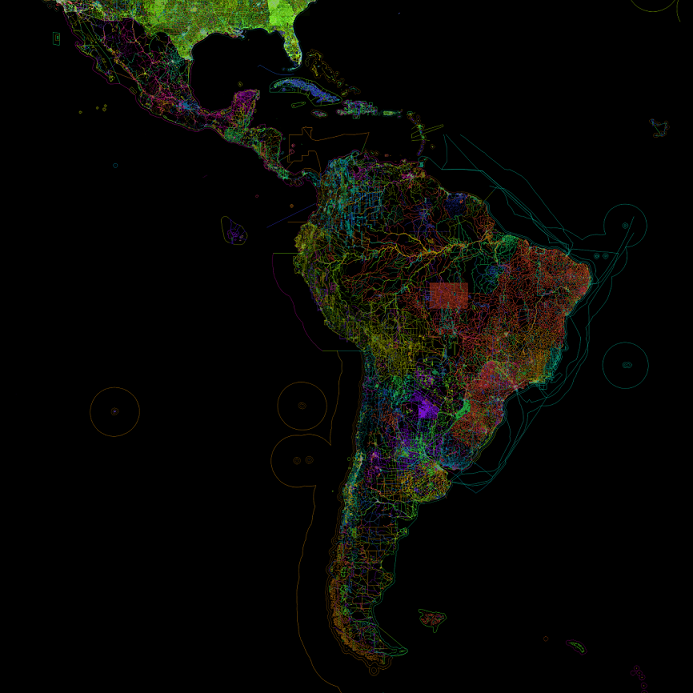Right-wing governments will “de-dollarise” with the business elites in mind, ensuring that they win – at great cost to the majority of the population. According to experts, de‑dollarisation could worsen living and working conditions for the Latin American population.
 Juan J. Paz-y-Miño Cepeda
Juan J. Paz-y-Miño Cepeda
The dollar’s hegemony has long stood unquestioned. Panama has used it since separating from Colombia in 1903; Argentina adopted a “convertibility” plan in 1991, pegging its peso to the dollar; Ecuador’s economy was dollarised in 2000; while other countries in the region have maintained de facto dollarisation.
But now, the war in Ukraine has unexpectedly altered the international context of the twenty‑first century. United Nations institution-building and a “rule-based world” did not prevent the major powers from intervening unjustly in various countries.
The United States has a long history of imposition, interventions, threats and sanctions across Latin America, using the dollar as a political and economic tool to impose its agenda on the continent.
However, in the twenty‑first century, a new, multipolar world is being shaped – characterised by the rise of the BRIC countries (Brazil, Russia, India, China and South Africa) and other regions – a world which has begun to change what, until the Ukraine war, was considered the insurmountable hegemony of the dollar and the SWIFT system.
 Bilateral trade agreements using national currencies are on the rise (India, Iran, Dubai, Malaysia, Pakistan, Saudi Arabia), while Russia and China have created their own payment system and the BRIC countries are moving away from the dollar, planning a common fiduciary currency.
Bilateral trade agreements using national currencies are on the rise (India, Iran, Dubai, Malaysia, Pakistan, Saudi Arabia), while Russia and China have created their own payment system and the BRIC countries are moving away from the dollar, planning a common fiduciary currency.
Brazil and China have agreed to trade using their currencies, while Brazil and Argentina are discussing a common fiduciary currency. Moreover, a number of African countries are planning to trade on the back of rare land or metal securities. Consequently, the United States has voiced not only displeasure but also alarm. Even if mass desertion of the dollar is not envisaged in the short term, it is expected in the long term; in fact, according to the American Institute for Economic Research, it is inevitable.
Latin America will have to weigh up the dollar’s uncertain economic future, especially the countries whose economies are informally or totally “dollarised”.
In Ecuador, as a result of the pandemic, there have already been vociferous calls from the political right, who consider de-dollarisation inevitable.

The concern is openly business-based. And herein lies the problem: if the same neoliberal, oligarchical business model (restored in 2017 and consolidated since 2021) continues in the future, right-wing governments will “de-dollarise” with the business elites in mind, ensuring that they win – at great cost to the majority of the population.
Ecuador already has plenty of experience of this type of economic “solution”, with its sucretisation (1983) and resucretisation (1987) programmes that converted external private sector debt into domestic currency debt, as well as with dollarisation itself, which has been maintained by a series of advantageous outcomes.
On this basis, it is highly likely that “de-dollarisation” at the hands of business-centred governments will unsettle Latin America and only worsen living and working conditions for its population.
Some historical background
The Bretton Woods Conference (1944) marked the start of economic globalisation efforts, under the hegemony of the United States. At this conference, agreements were signed to create the International Monetary Fund (IMF) and the International Bank for Reconstruction and Development (IBRD, part of the World Bank).
These institutions solidified prospects for coordination in two areas: money and finance, and development. Trade agreements proved more difficult, although the General Agreement on Tariffs and Trade (GATT) came into force in 1948 and mediated trade between contracting parties for almost half a century, albeit provisionally and limited to trade in goods.
 The irregular functioning of the GATT lead to the Uruguay Round (1986 to 1994), which in turn resulted in the creation of the World Trade Organization (WTO) in 1995. This consolidated a legally regulated global market for all members covering trade in goods, services and intellectual property.
The irregular functioning of the GATT lead to the Uruguay Round (1986 to 1994), which in turn resulted in the creation of the World Trade Organization (WTO) in 1995. This consolidated a legally regulated global market for all members covering trade in goods, services and intellectual property.
By 1997, 132 countries had joined the WTO, among them practically all Latin American countries – including Cuba.
As a result of the Bretton Woods agreements, the United States dollar was adopted as the currency for international trade and savings. And the Federal Reserve continued to be backed by gold (Gold Exchange Standard). However, in 1971, under Richard Nixon’s administration, the United States abandoned dollar convertibility to gold. Yet this measure did not change the dollar’s hegemony in international trade and financial affairs.
In May 1915, Latin American countries convened in Washington for the First Pan American Financial Conference. Participants comprised a large group of US banks and three representatives each from 18 Latin American countries (Argentina, Bolivia, Brazil, Chile, Colombia, Costa Rica, Cuba, Dominican Republic, Ecuador, Guatemala, Honduras, Nicaragua, Panama, Paraguay, Peru, El Salvador, Uruguay and Venezuela).
 The aims included “establishing closer and more satisfactory financial relationships”, replacing European credit affected by the war with “credit from the United States”, establishing Federal Reserve branches or agencies in all countries, and ensuring “uniform legislation” to impose the “gold standard”.
The aims included “establishing closer and more satisfactory financial relationships”, replacing European credit affected by the war with “credit from the United States”, establishing Federal Reserve branches or agencies in all countries, and ensuring “uniform legislation” to impose the “gold standard”.
But these aims were not realised. Latin America did not join the United Nations system and the institutions created by the Bretton Woods agreements until after the Second World War.
(Translated by Rebecca Ndhlovu – Email: rebeccandhlovu@hotmail.co.uk) – Photos: Pixabay












.jpg)












